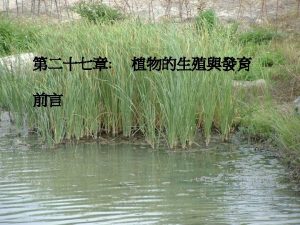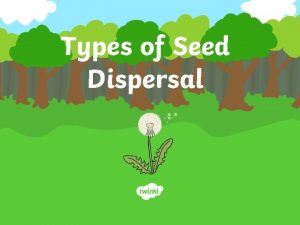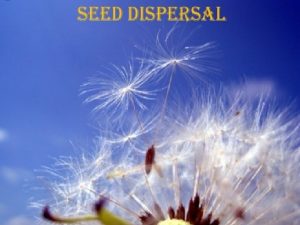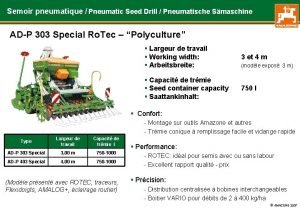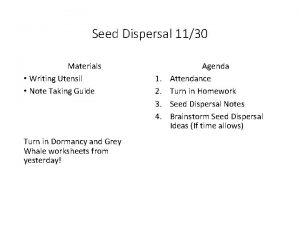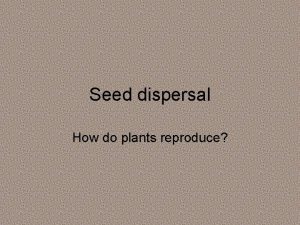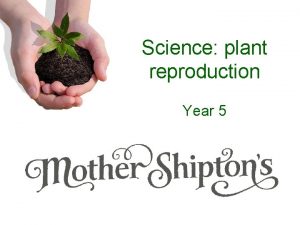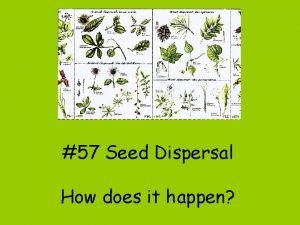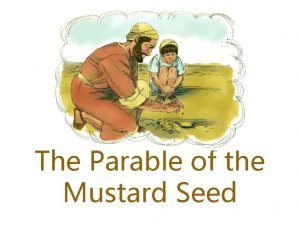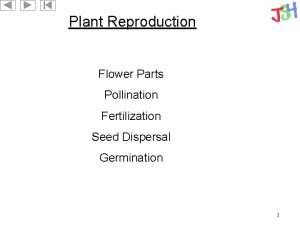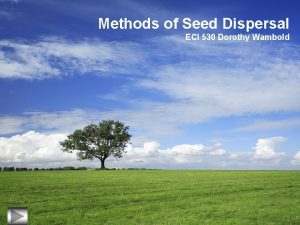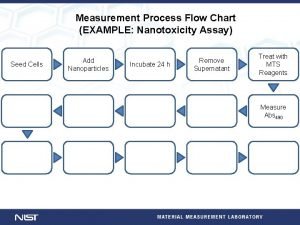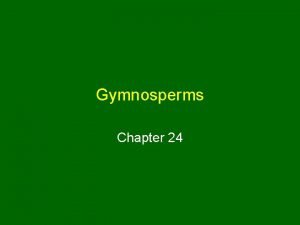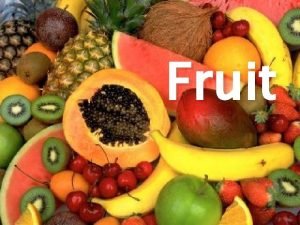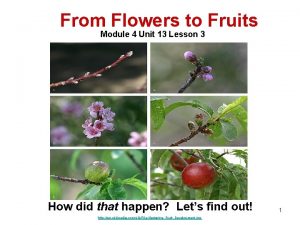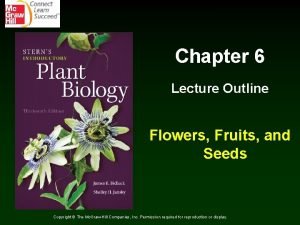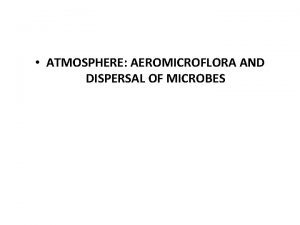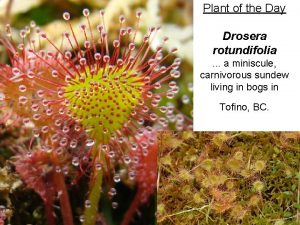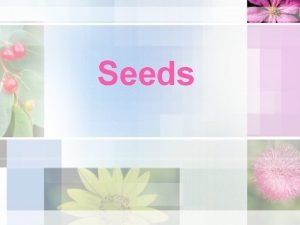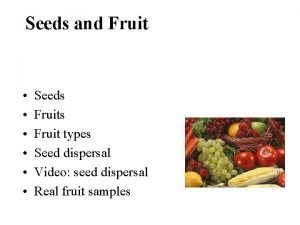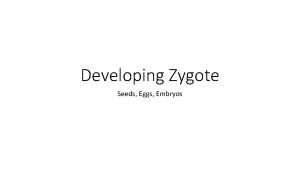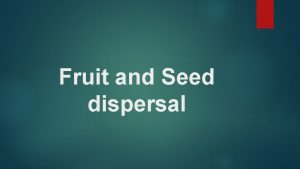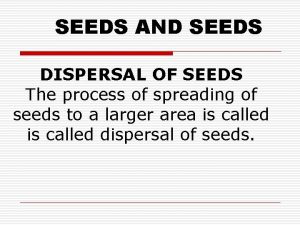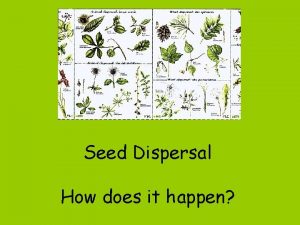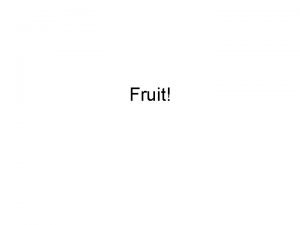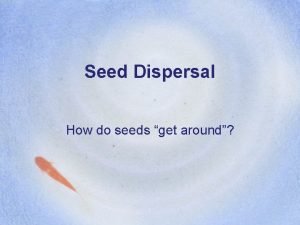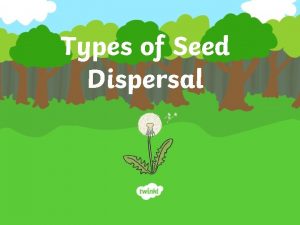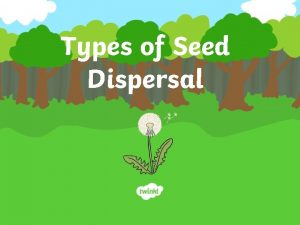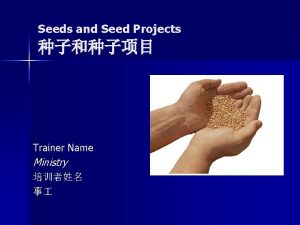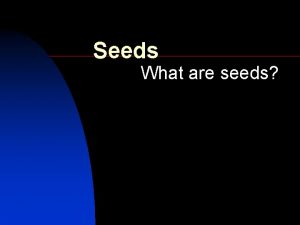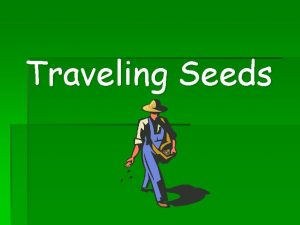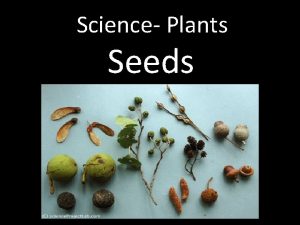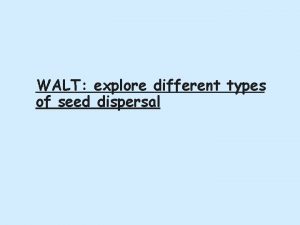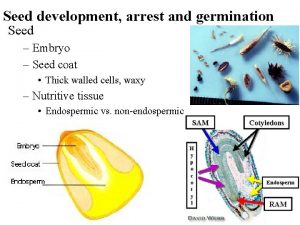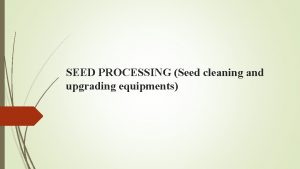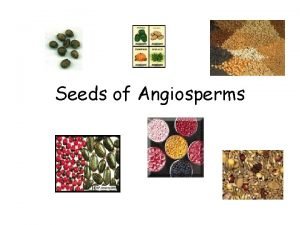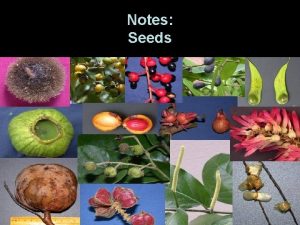Seeds and Fruit Seeds Fruit types Seed dispersal



























- Slides: 27

Seeds and Fruit • • • Seeds Fruit types Seed dispersal Video: seed dispersal Real fruit samples

What is a seed? • • A matured ovule, containing: 1. a plant _____ 2. a food supply 3. covered by a _______

Embryo • The seed contains a well-formed multicellular young plant embryo (germ) • Embryo is _____ (2 n) • It will become a whole plant

Nutritive tissue • Seed contains a food supply • Stored food contains enough energy for the embryo to grow through the soil, when seedling is unable to photosynthesize. • Food source can be the _____, which is ______ (_n) – as a result of double fertilization

Seed coat • A thick protective coat – outer layer of the seed • Formed from the ________ Seed coat

Gymnosperm seed • Single fertilization produces the diploid embryo (2 n) • Food source is the haploid megagametophyte

Flowering plant seed • • • In angiosperms (flowering plants) there is DOUBLE ________ Which produces a diploid ____(2 n) and, A triploid (3 n) _____ Endosperm is the food source

Dicot vs. monocot seed • Dicot has two cotyledons (like bean) • Endosperm (food) is kept in the _____ • Monocot has one _____ which absorbs the endosperm tissue during germination (corn)

Fruit • In flowering plants – Fruit is a mature, ripened o_____ that contains the seeds • Pericarp – the ovary wall Fruit types • A. Simple • B. Aggregate • C. Multiple ovary

A. Simple fruit • A. Simple fruit – develops from a ______ ovary of a single flower. • Simple fruits can be either fleshy or dry when mature • Simple fleshy fruit • 1. _____ • 2. Hesperidium • 3. _____ • 4. Pepo • 5. _____

Simple fleshy fruit • 1. Berry – entire fruit wall is soft and fleshy at maturity. Inside is slimy. • For example, grapes, tomato, etc. • 2. ________ is a berry with tough, leathery rind (peel) • Examples: oranges, lemons, other citrus.

Simple fleshy fruit: drupe • 3. _______ type – outer part of fruit wall is soft and fleshy, inner part is hard and stony • For example: ___________

Simple fleshy fruit: pepo • 4. ____ – also a fleshy fruit with a tougher outer rind • All member of the squash family: pumpkin, melons, cucumbers

Simple fleshy fruit: pome • 5. Pomes: most of the fleshy part of pomes develops from the enlarged base of the perianth (corolla and calyx) that has fused with the ovary wall • Pomes include __________

Simple dry fruit: capsule • Simple dry fruits are dry (not fleshy) at maturity. Simple dry fruits that open at maturity include: capsules and legumes • Capsule – fruit is dry at maturity and splits open along several seams • Example: Cotton

Simple dry fruit: Legumes • Legumes are dry at maturity and split open along _______ seams • Examples: pea pods, bean pods, peanut

Simple dry fruits • Simple dry fruits that do NOT open at maturity include • Caryopsis: seed coat is fused to the ovary wall (cereal grains like __________) • Nuts: single-ovary wall and seed coat remain separate, ovary wall is very hard (acorns)

B. _______ • _____ fruit develops from one flower with many separate pistils/carpels, all ripening simultaneously • Examples: strawberry, raspberries, blackberries

C. Multiple fruit • Multiple fruit develops from ovaries of several flowers borne/fused together on the same stalk • For example: ______

What is the purpose of the fruit? • The main function of the fruit is to disperse the seeds • Dispersal is important because • 1. It spreads the progeny in order to colonize new environments • 2. Reduces _______ for resources with parents • 3. Reduces the chances of predators destroying all of the plant’s yearly seed production • Four types of seed dispersal: • A. Self dispersal • B. ______ dispersal • C. Water dispersal • D. _______ dispersal

A. Self dispersal • Plants disperse their seeds by forceful ejection – explosive fruits! • Witch hazel, squirting cucumber (jet propulsion)

Self dispersal • The peanut plant sows (buries) its own seeds! • Geocarpic: carpel grows inside the earth (soil)

B. Wind dispersal • Fruit and seeds may have special devices for wind dispersal • Plumes catch wind currents: Dandelion • Trees take advantage of their great heights for wind dispersal. Fruits with wings are used to slow the descent to land: maple, ash fruit

C. ______ Dispersal • Fruits and/or seeds use flotation devices to travel by water (in rivers, oceans, etc. ) • Fruit may have air spaces and corky floats: for example ________

D. Animal dispersal • Plants have _______ with animals to accomplish seed dispersal • Many plants depend on animals for seed dispersal; they may offer a nutritional reward • Animals learn to recognize ripened fruit colors • Fleshy fruits eaten and dispersed with feces

Animal dispersal • Some dry fruit attach and cling to animals (they hitchhike on the animals) • Some have Velcro-like hooks that cling to animal fur (burdock, cockleburs) • Others have sticky substances that stick to host (mistletoe)

Video on seed dispersal • Watch the video, take notes, answer these questions: • What carries the dandelion seeds for miles? • What feature of trees gives them a particular advantage when dispersing seeds by air? • How does the squirting cucumber disperse its seeds? • Although plants use wind and water, what do most plants use as carriers for their seeds? • Blackberries on a tree do not ripen simultaneously, why? • What plant do elephants help to disperse? How do they do it? What percentage of these seeds germinate in elephant dung? Why?
 Statolith in plants
Statolith in plants Drop and roll seed dispersal examples
Drop and roll seed dispersal examples Drop and roll seed dispersal
Drop and roll seed dispersal Acorn seed dispersal
Acorn seed dispersal Seed dispersal by animals worksheet
Seed dispersal by animals worksheet Hooked seed dispersal
Hooked seed dispersal Beans dispersal
Beans dispersal Pollination fertilisation seed dispersal germination
Pollination fertilisation seed dispersal germination How does seed dispersal happen
How does seed dispersal happen Banana seed dispersal
Banana seed dispersal Mustard seed dispersal
Mustard seed dispersal Female flower parts
Female flower parts Seeds dispersed by splitting examples
Seeds dispersed by splitting examples Seed dispersal flow chart
Seed dispersal flow chart Why are gymnosperms naked seed plants
Why are gymnosperms naked seed plants Fruits and vegetables definition
Fruits and vegetables definition How does a fruit form
How does a fruit form Multiple fruit vs aggregate fruit
Multiple fruit vs aggregate fruit Aeromicroflora
Aeromicroflora Definition of avian
Definition of avian Dialect ap human geography
Dialect ap human geography Dispersal ap human geography
Dispersal ap human geography Plumule
Plumule Agent of dispersal
Agent of dispersal Radiological dispersal device
Radiological dispersal device What is seed
What is seed Two types of seeds
Two types of seeds Two types of seeds
Two types of seeds
